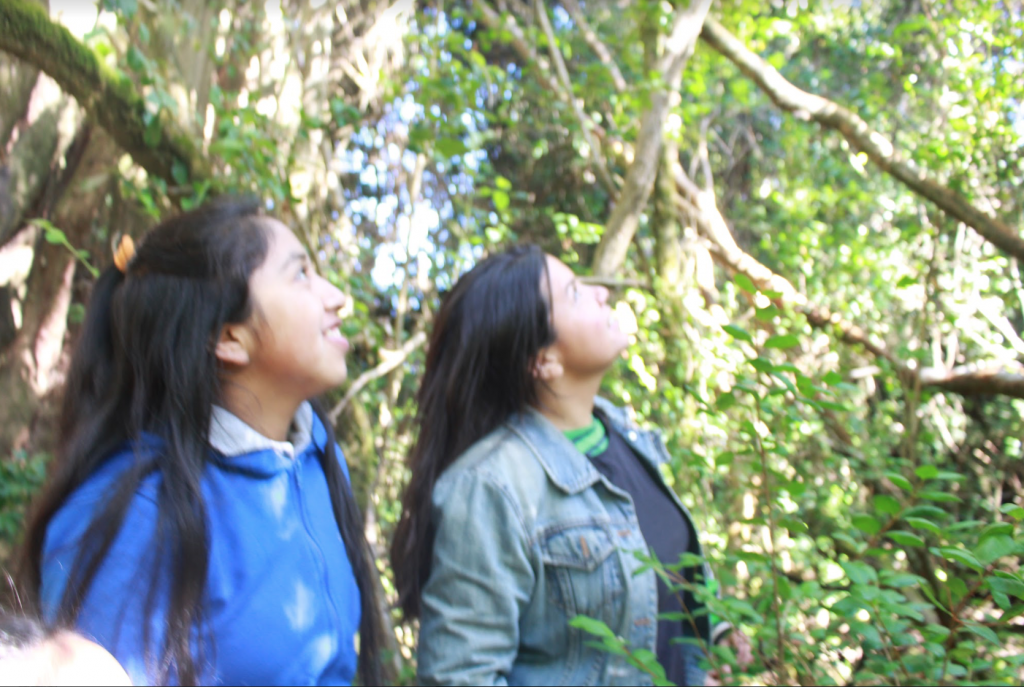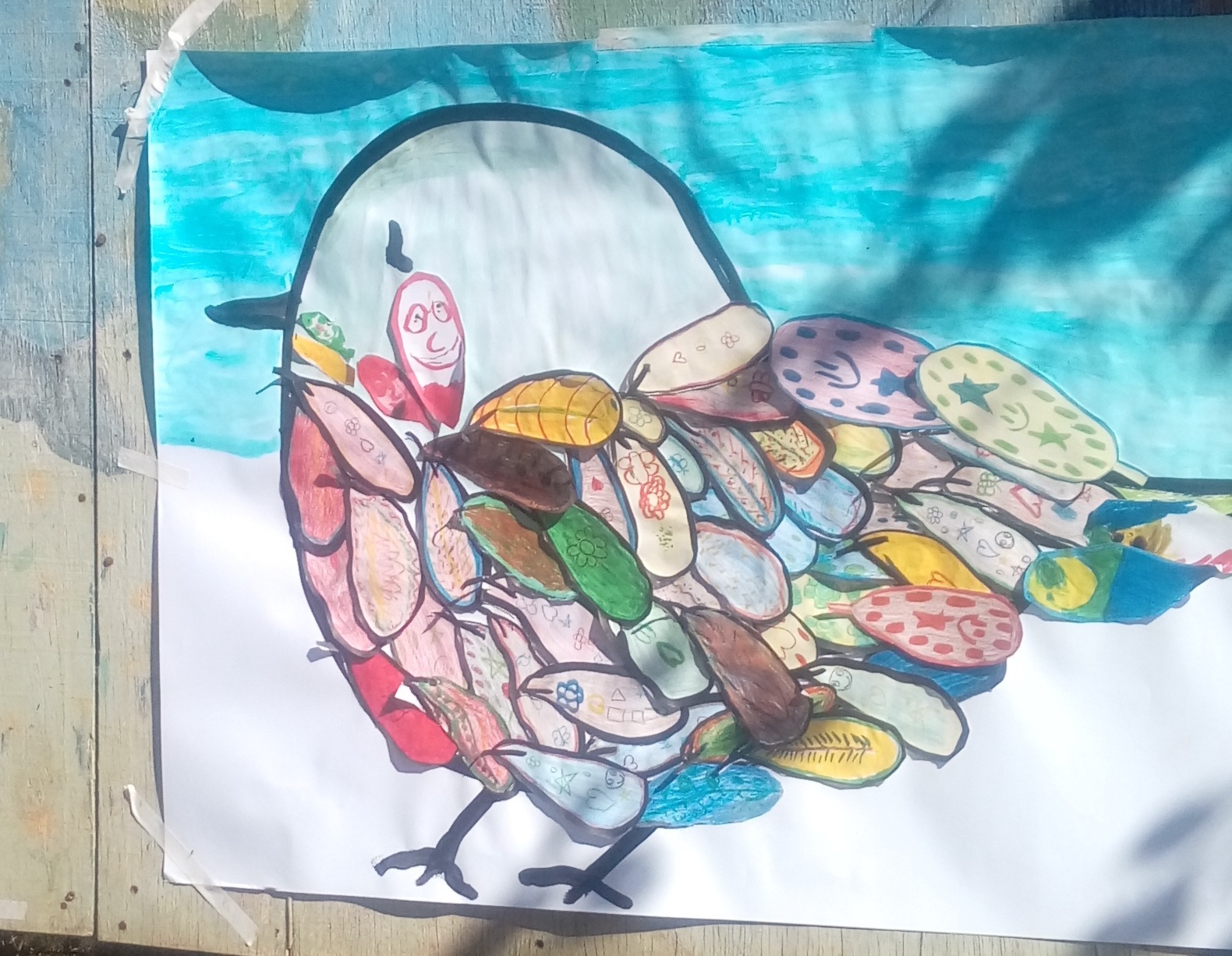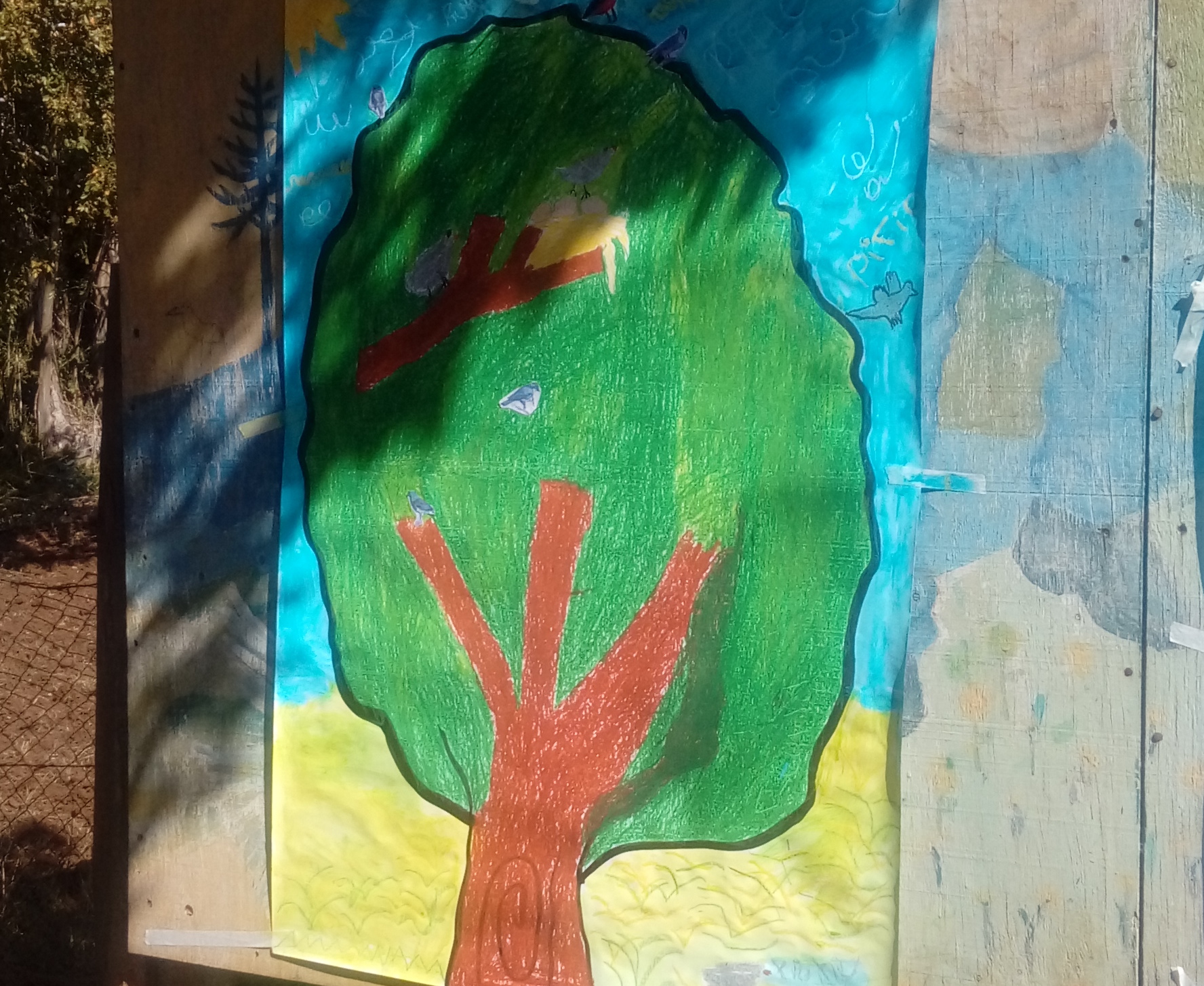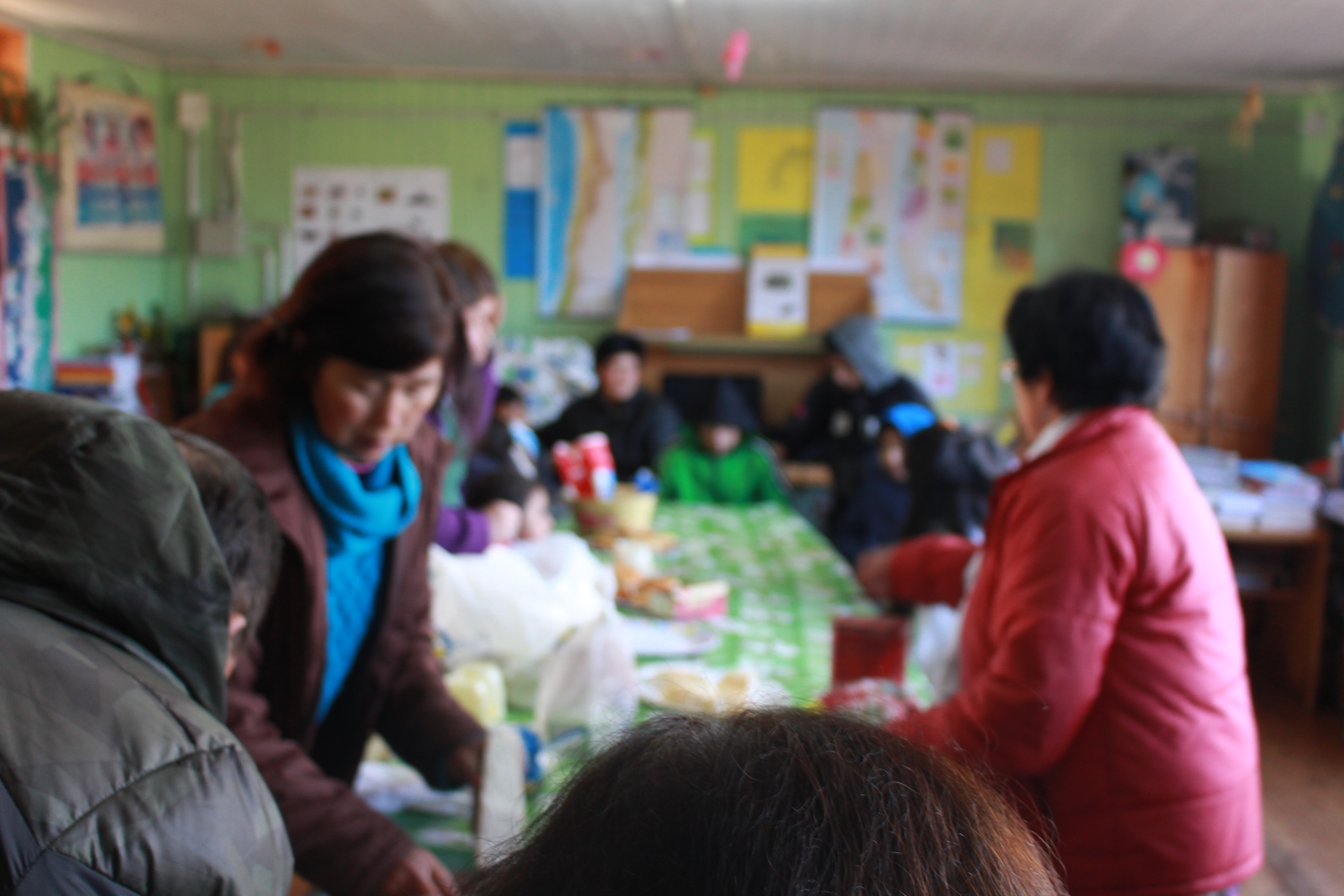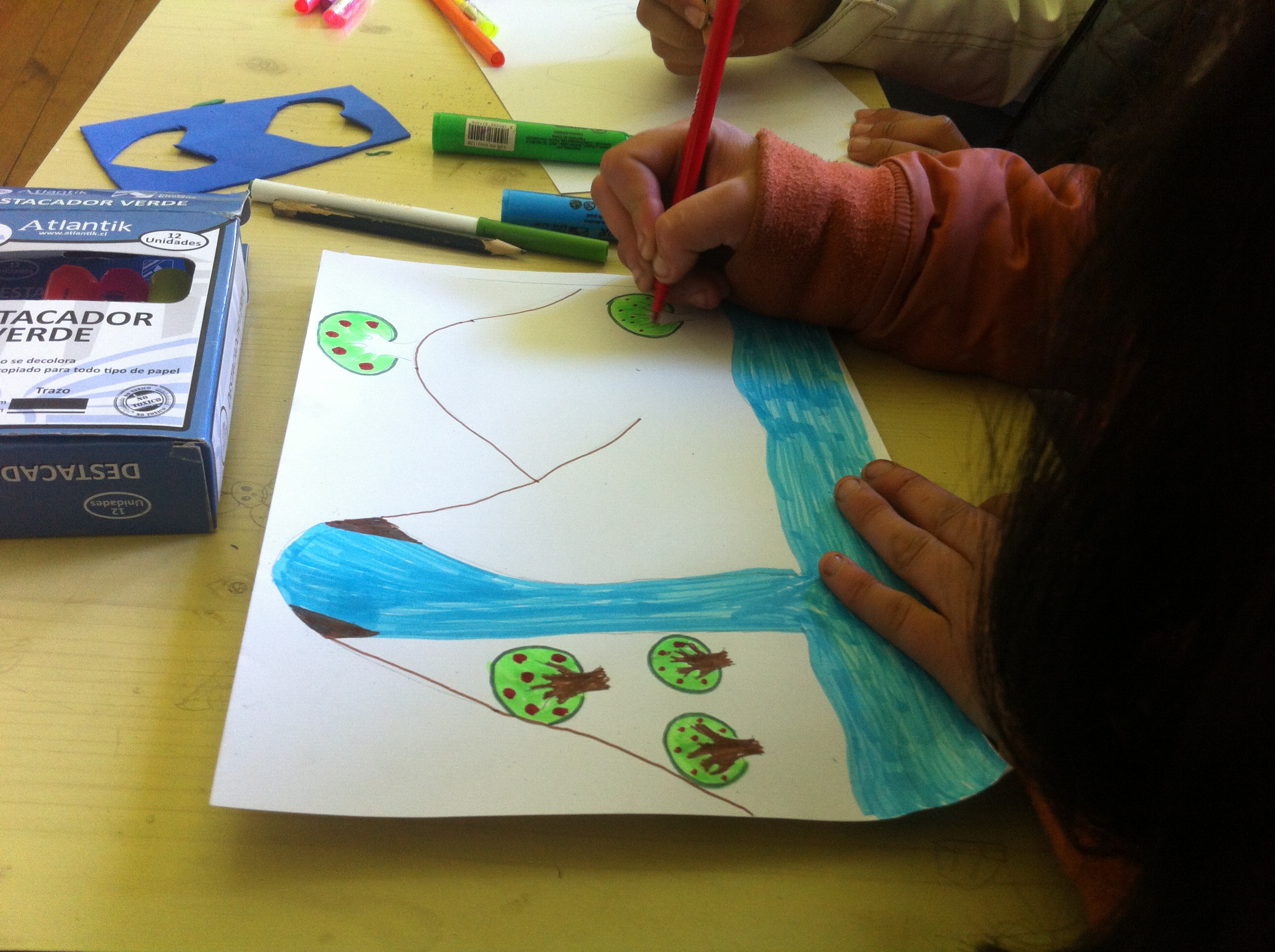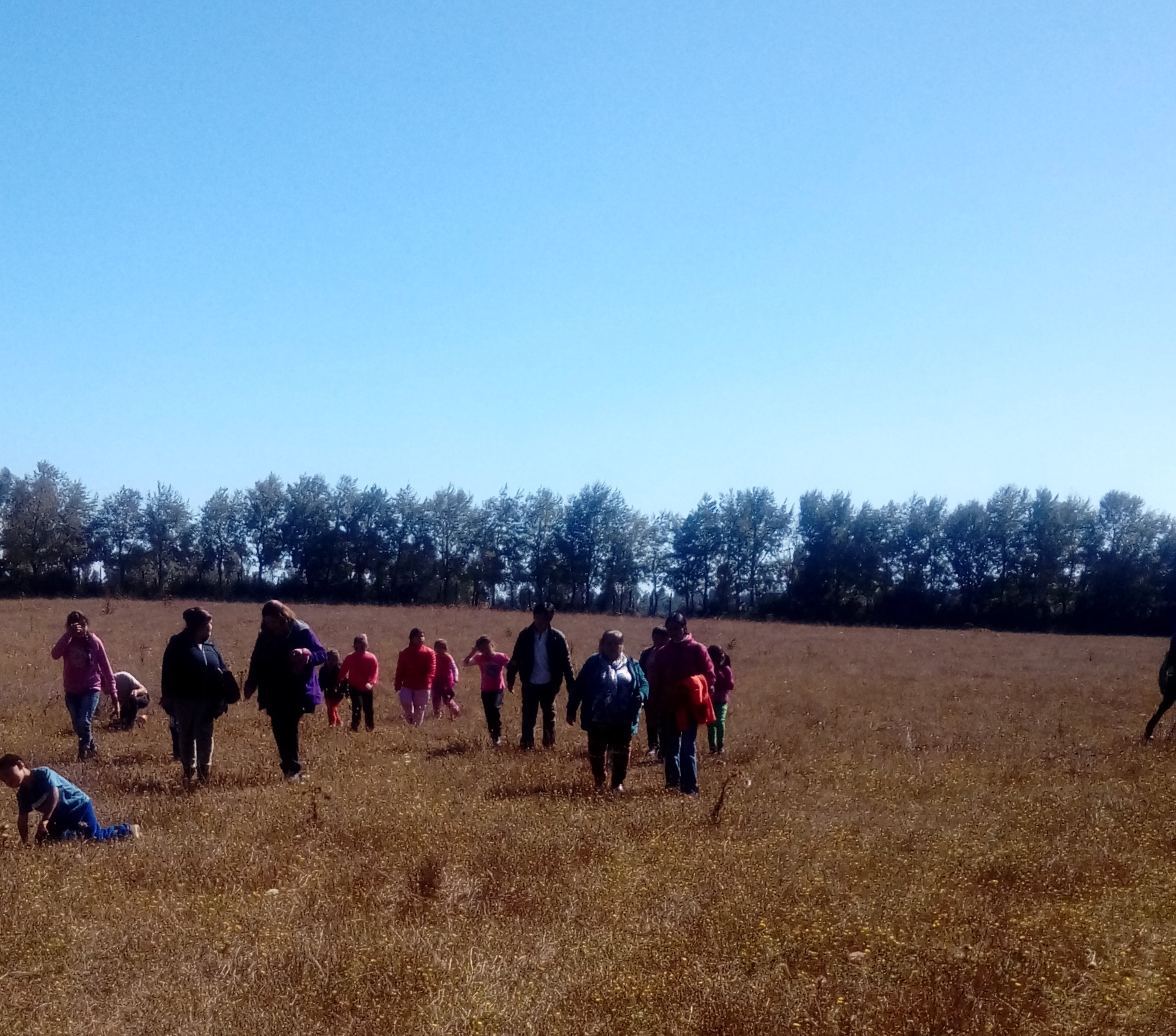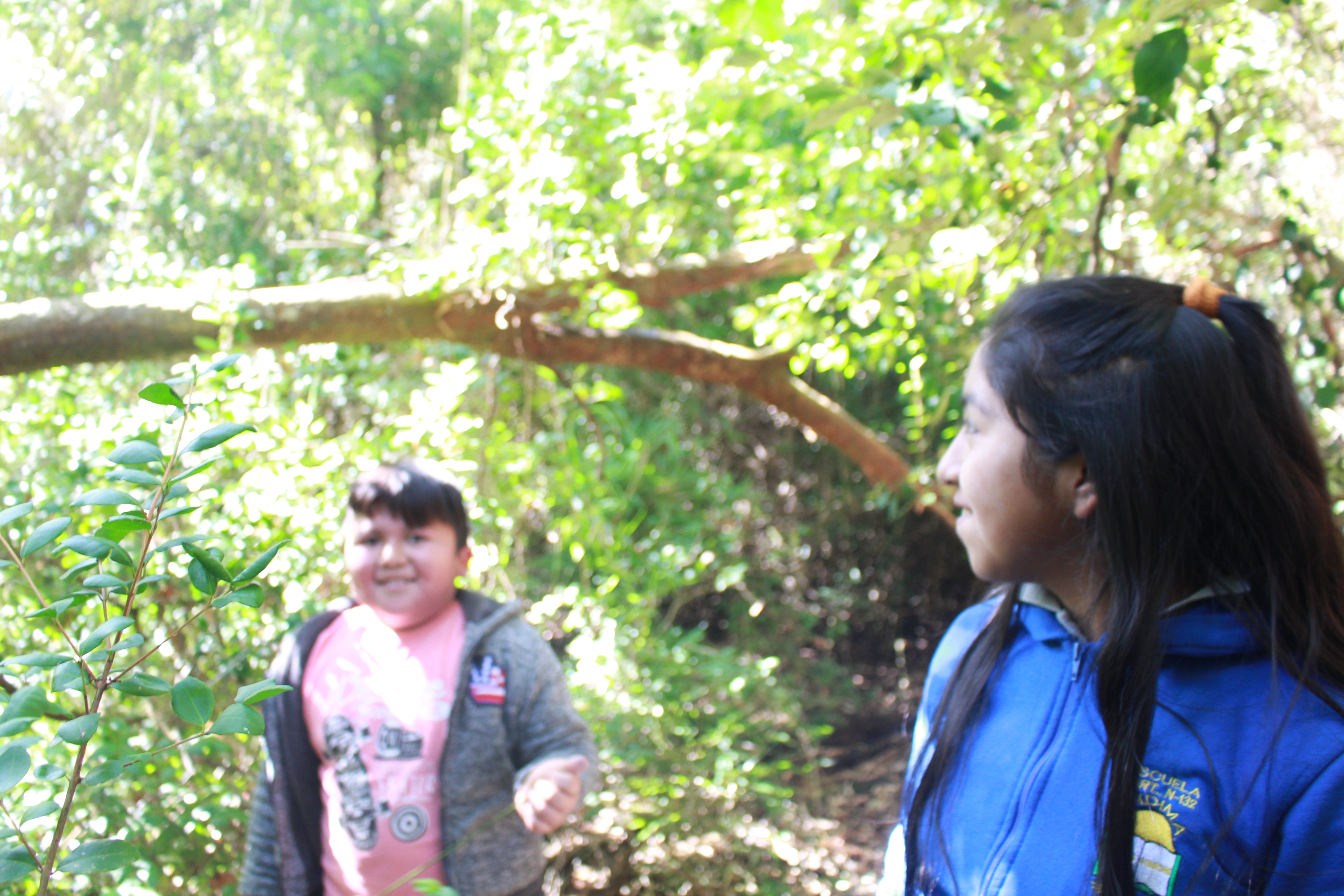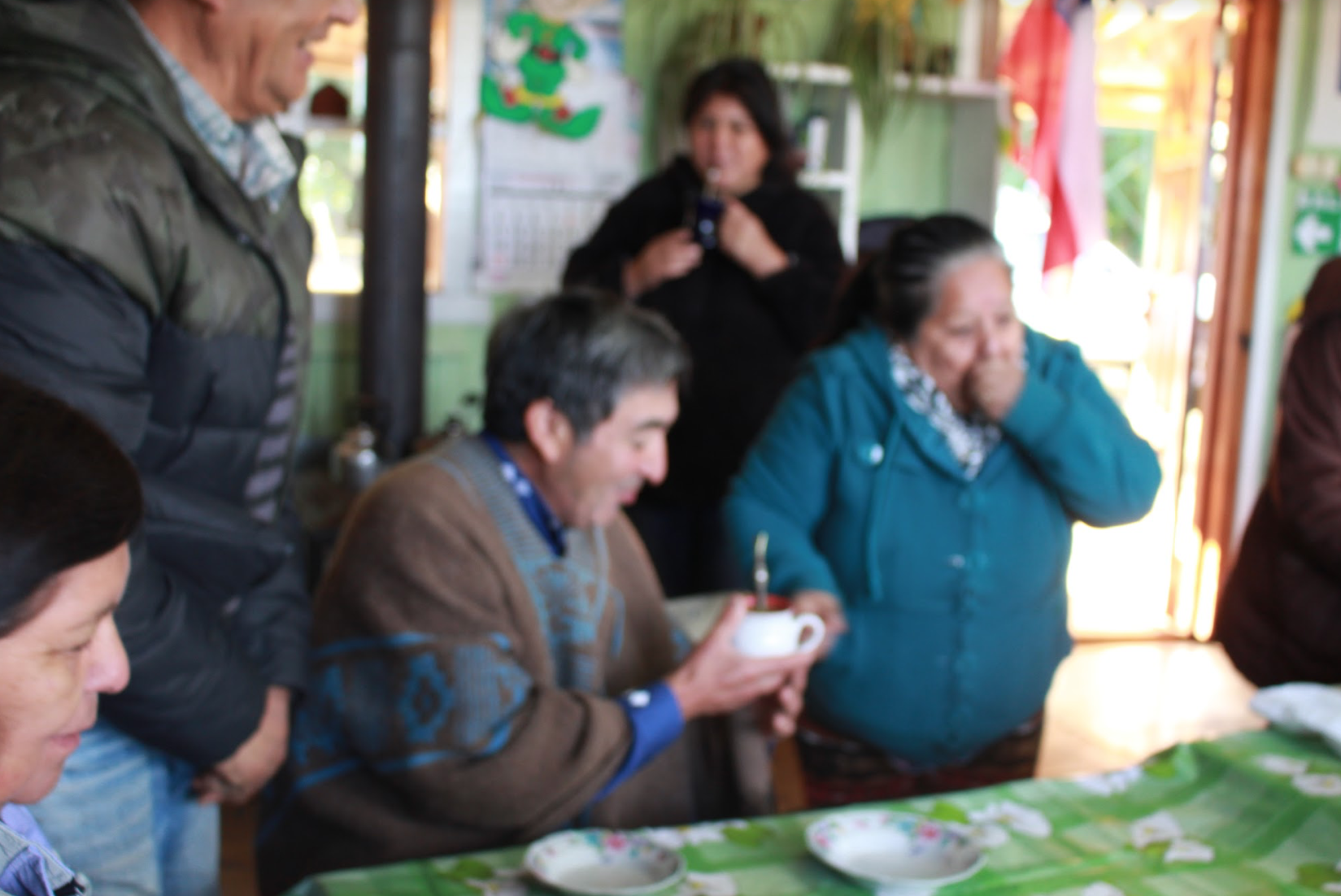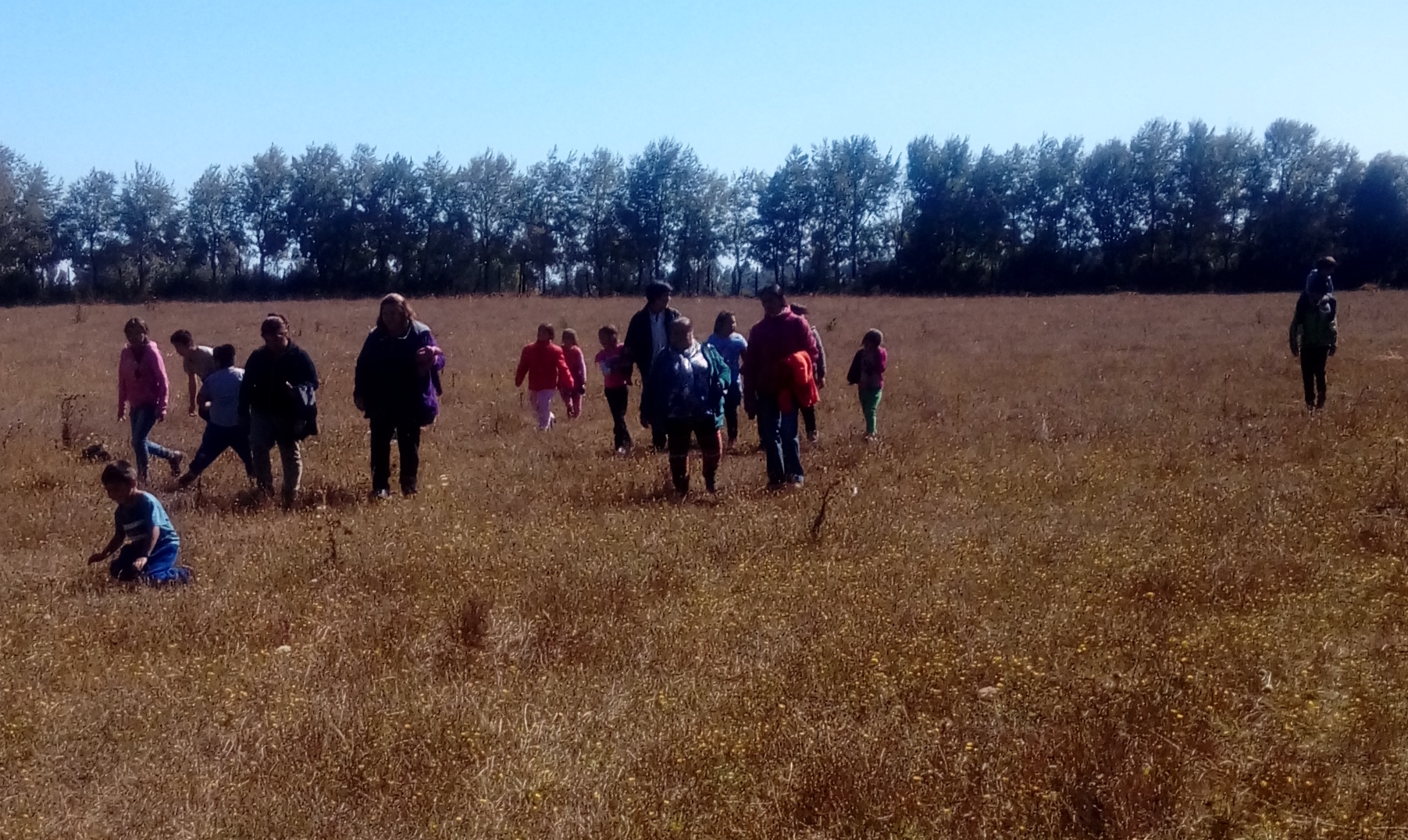The Huidima school, a rural school in Nueva Imperial, Chile, was awarded a mini-grant from the Lab of Ornithology. The school used the grant to create a celebration of Science and Mapuche culture.
The goal of this celebration was to create an alliance of science, art, and the culture of the community. The participants celebrated the local birds that they saw every day. They then learned about the birds through the wise lens of their Mapuche ancestry. It was important to create instructional materials so that these activities could be replicated in other territories of Walmapu (a Mapuche territory). The materials included information about birds that were near their school.
The elder and Lonko (Chief of the community) Ernesto Huenchulaf was present at the celebration. To start the outside walk where bird observations were going to take place, Lonko asked permission of the Ngen (the spirits of the place). The Ngen hold the energy of the place. This was a beautiful thing to watch because it showed a deep connection with our natural environment.
The program at the Huidima school lasted all day. Parents and school officials participated along with the children in a bird walk conducted by the art professor Andrea Avendaño Caneo and Lonko Ernesto Huenchulaf. Everyone took a walk where students could hear bird sounds. The birds the students observed were Treile (Southern Lapwing, Vanellus chilensis), Pitiu (Chilean Flicker, Colaptes pitius), Lloica (Long-tailed Meadowlark, Sturnella loyca), Zorzal (Austral Thrush (Magellan), Turdus falcklandii magellanicus), Picaflor (Green-backed Firecrown, Sephanoides sephaniodes), Bandurria (Black-faced Ibis, Theristicus melanopis), and Torcaza (Chilean Pigeon, Patagioenas araucana). Listening to the bird sounds helped the children connect sounds with specific birds. It was a beautiful experience for everyone involved! The children imitated the sounds of the birds they heard, especially Pitiu (Chilean Flicker, Colaptes pitius), a bird that has a very special meaning to the Mapuche culture. The passage below shows the significance of the Pitiu (Chilean Flicker, Colaptes pitius):
A Bird that notifies the movement of others. It is said that a visitor
“sends their Pitiu” to announce their arrival. Its name is
an onomatopoeia of the sound it makes. If it sings three days in a row it could signify death
– (Wera Wenu Werken, Mensajeras del cielo, Wilma Aguas Deumacán, 2009)
The children then drew one mural containing their favorite bird and another mural about the bird sounds their local birds make. The students also made paper birds and enjoyed the educative materials from the Cornell Lab of Ornithology! The children of the Huidima school loved using visual arts to learn about the birds that resided near their school!
Thanks, the school for allowing this event to occur. A huge thanks to the Lonko for the greetings he gave to the activity space, his participation in the events, and for opening our eyes to the beautiful Mapuche culture and its perspective on birds and the environment. Many thanks to the families who accompanied their children the whole day, from breakfast to the outside bird observations. This celebration helped bring parents, grandparents, and children together for bird conservation!
